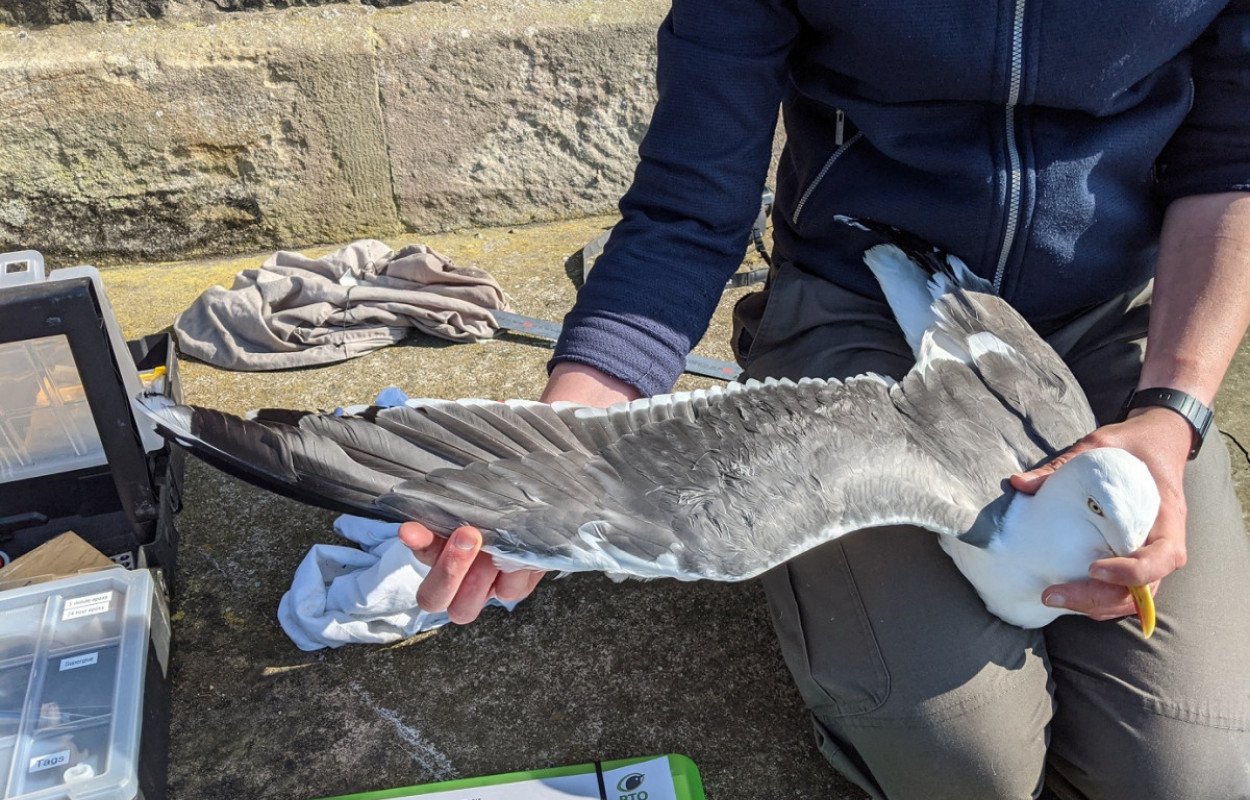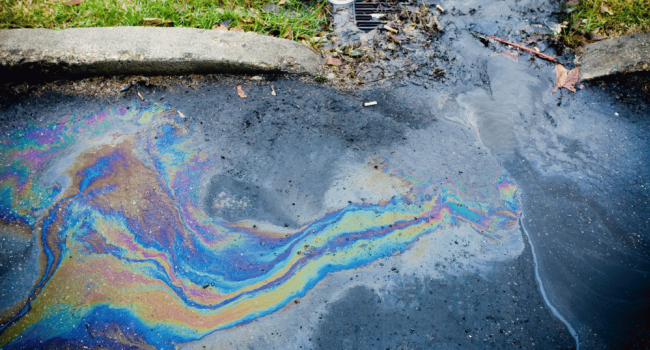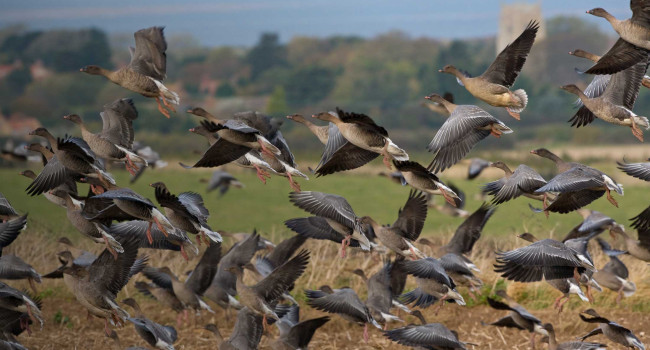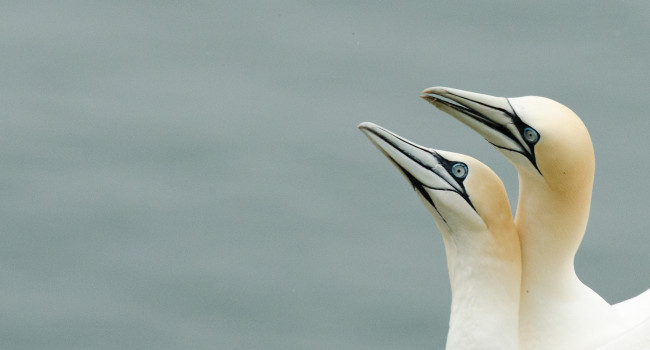Daily, seasonal and annual variation in area use of Lesser Black-backed Gulls (Larus fuscus) related to offshore renewable developments

Author(s): Clewley, G.D., Thaxter, C., Scragg, E.S., Masden, E.A., Barber, L.J., Conway, G., Clark, N.A. & Burton, N.H.K.
Published: April 2023
Journal: Bird Study Volume: 70
Digital Identifier No. (DOI): 10.1080/00063657.2023.2190080
Seabirds and other species that use the marine environment are increasingly encountering offshore wind farms, as governments worldwide erect ever more turbines in their quest to reduce greenhouse gas emissions. GPS-tracking, where small tags are attached to individual birds, can give information on how birds respond to the presence and construction of offshore wind turbines, including at times when it is otherwise difficult to collect data (for example, at night and in poor weather).
Abstract
Capsule
Individually tracked Lesser Black-backed Gulls Larus fuscus rarely visited offshore areas in this study but showed high variation across multiple time scales in overall area use.
Aims
To quantify the variation in space use by Lesser Black-backed Gulls, a species of conservation concern, from short- and long-term data on tracked individuals, and to assess the time spent offshore and interacting with offshore wind farms (OWFs) before and after their construction.
Methods
GPS tracking data were collected between 2016 and 2019 from 36 Lesser Black-backed Gulls breeding in a declining colony in the UK with several operational OWFs nearby. Variations in home ranges, foraging trip metrics and the proportion of time spent offshore or within OWFs were analysed at three temporal scales: (i) over a daily cycle, (ii) across the breeding season and (iii) between years.
Results
Individuals predominantly used terrestrial areas. Less than 1.25% of the overall breeding season time budgets were spent offshore across years, and offshore use and time within OWFs did not vary significantly between years. However, home range sizes and foraging trip metrics did vary significantly across all time scales and individual variation was significant.
Conclusion
Our results suggested that there was little change in the relative use of offshore areas over time and thus in the macro-scale response of Lesser Black-backed Gulls to the OWFs, one of which was under construction during the period of study. Colony productivity and changes in the terrestrial environment were likely to be more important for influencing foraging movements at this colony.
BTO scientists have deployed hundreds of GPS tags on Lesser Black-backed Gulls since 2010. In this study, long-term GPS tracking devices were fitted to 36 adult gulls breeding at South Walney, in Cumbria. During the course of data collection (2016–19), two more offshore wind farms were built in addition to those already present in the area. This allowed the researchers to examine how tagged gulls’ habitat use might or might not change before, during and after the construction of these new developments.
Overall, the study showed that tagged Lesser Black-backed Gulls did not spend a lot of their time offshore (less than 1.25% of their overall time budgets). They spent slightly more of their time offshore at night (1.82%) than during the day (1.00%). The gulls’ individual ‘home ranges’ (the total area an animal uses for foraging and breeding) varied significantly from bird to bird, and through time. For instance, home ranges were smaller at night than during daylight hours, and they shrank in late May (when birds were spending a lot of time incubating their eggs) and again in late July (at the end of the breeding season). Similarly, the distance gulls covered on their trips away from the colony varied, with the shortest trips coinciding with late May and longer trips from August onwards, as birds began to lose their association with the colony and disperse after the end of the breeding season.
Only two tagged gulls had home ranges that overlapped with offshore wind farms, and fewer than half of the birds tracked visited an offshore wind farm in any given year. The proportion of birds visiting offshore wind farms did not vary significantly from year to year, including in areas of sea where wind farms were being built or coming into operation during the course of data collection.
The results from this tracking study were perhaps surprising. Although gulls are known to use a range of terrestrial areas, traditional thinking is that they still widely use offshore areas, especially during the chick rearing period. The lack of offshore movements in this study meant that broad responses in foraging and home ranges were not detected directly in relation to the construction of new developments.
Nonetheless, it was useful to show variation in these measures between years and to highlight the importance of a multi-year dataset. It was also useful to collect evidence specifically from a protected area located close to new offshore developments. South Walney is a nature reserve designated as a Site of Special Scientific Interest and a Special Protection Area. In the past, potential impacts on birds using protected areas close to new or existing developments were inferred from data collected at other sites. Thanks to this study we now have evidence from individuals at a protected site directly affected by the new developments.










Share this page